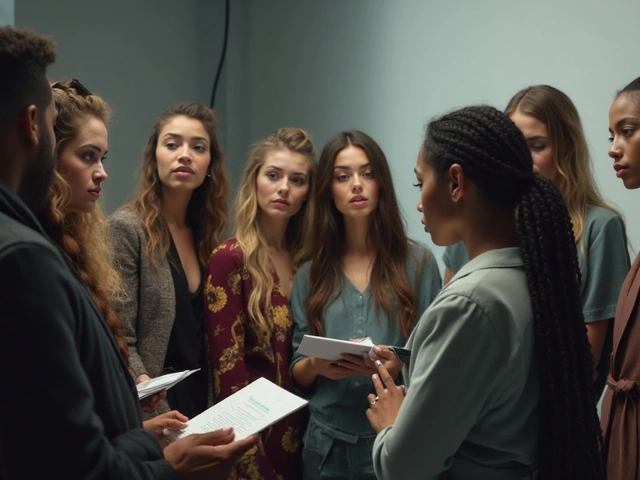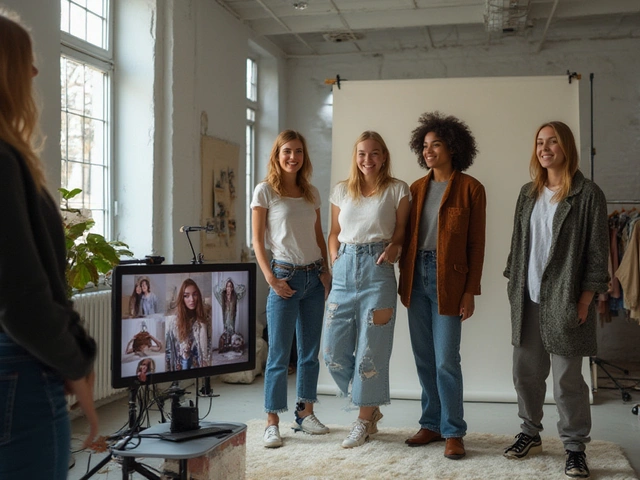Your portfolio isn’t just a pretty collection of photos—it’s your ticket to serious brand work. Don’t just throw in every shot you have and hope for the best. The brands you want to work with actually care a lot about the story your portfolio tells. They want to see if you fit their vibe, if you’re versatile, or if you can pull off a certain look. Pretty pictures alone won’t cut it if they don’t see some connection between you and their brand identity.
If you know what brands are searching for, you can shape your portfolio to match. For example, if a skincare company is into natural, no-makeup looks, keep the heavy editorial makeup shots out of your pitch. One model I know got a sportswear campaign just because she included photos in athletic wear, even though most of her work was fashion and beauty. It’s about making it super easy for brands to picture you selling their stuff.
- What Brands Are Really Looking For
- Tailoring Your Portfolio to Fit the Gig
- Reaching Out: Making Your Pitch Stand Out
- Mistakes That Stop You from Booking Campaigns
What Brands Are Really Looking For
Ever wonder why some models get campaign after campaign? It’s not random. Brands usually ask three things: Does this person match our look? Can they represent our message? Will they help us sell?
Let’s break that down. First, brands check if you naturally fit their typical product or customer. Luxury labels like more polished, high-fashion looks, while streetwear brands are into edgy, lifestyle vibes. If you want to work with both, you need to show both styles in your model portfolio—not just your favorite shots.
Second, brands want to know you “get” their message. For example, in 2024, major makeup brands like Glossier and e.l.f. hired models who look authentic and relatable. They wanted people who could pull off a “real life” feel, because customers trust real stories. So, showing personality and variety matters—don’t just repeat the same poses or moods. Mix in genuine smiles, movement, and even outtakes if they tell a story.
Third, brands want proof you can drive results. Big agencies now track engagement, not just looks. If you have previous collaborations, include snapshots and mention what worked well—maybe you created a viral TikTok, or boosted a brand’s Instagram reach. If you’re new, focus on showing potential by highlighting versatility and enthusiasm.
Here’s what brands notice when they look at your portfolio:
- Range—Show you’re not a one-look wonder. Include casual, editorial, commercial, and natural shots if you want to work across niches.
- Professional quality—No fuzzy phone pics. Good brands expect crisp images, clear lighting, and solid editing.
- Storytelling—Your images should give a sense of your personality and flexibility. A little context, like brief captions, can help.
- Consistency—Your style or personal brand should shine through without feeling repetitive.
- Relevance to their market—If you want fitness brands to notice you, highlight sport and wellness shots. Want beauty campaigns? Make sure skin and makeup shots are strong.
Brands want to see you’ve done your homework. Show them you know their products, target audience, and core vibe. Even small details like colors, poses, or themes that match their current ads can make you stand out in a big way.
Tailoring Your Portfolio to Fit the Gig
Brands are picky—they want to see exactly what they're looking for, not just what you think looks cool. If you send the same model portfolio to every brand, you’re basically playing the lottery with your chances. Instead, shape your portfolio so it speaks right to the brand’s needs. That means doing your homework on their previous campaigns and current style direction.
The fastest way to grab a brand's attention? Put relevant shots front and center. If you’re eyeing a fitness collab, kick things off with your best athletic photos. Going for a luxury skincare partnership? Choose clean, close-up headshots with natural light. Brands want all the guessing work done for them, so the easier you make it, the better your odds of getting picked.
"Brands are looking for models who represent their customer base. If your portfolio feels tailored for them, you’re already ahead of 80% of the competition." — Agency scout from Wilhelmina Models
If you’re stuck on how to customize your portfolio for a specific brand or campaign, here’s a simple checklist to follow:
- Check their Instagram and see what images keep popping up.
- Note the vibe: Is it laid-back and real, or stylized and high-gloss?
- Match your posing, styling, and even your backgrounds to what fits their look.
- If you don’t have the right shots yet, do a quick test shoot on your phone. Good lighting and a simple backdrop can go a long way.
- Only include your best 8-12 images. Brands will lose interest fast if you drag it out with filler shots.
Check out how different types of shots rank for the top kinds of collaborations, based on a quick look at top U.S. agency submissions:
| Brand Category | Preferred Image Type | Ranked Importance (1=Most) |
|---|---|---|
| Fashion | Editorial, Full-body | 1 |
| Skincare | Close-up, Bare faced | 1 |
| Sportswear | In-action, Candid | 1 |
| Jewelry | Detail shots, Hand poses | 1 |
When you treat your model portfolio like a personalized pitch instead of a generic gallery, brands notice—and they’re way more likely to reply with a "yes." Don’t forget, updating your shots before every reach-out isn’t extra work; it’s how you get repeat gigs and stand out in a crowded inbox.

Reaching Out: Making Your Pitch Stand Out
Sliding into a brand's inbox with a generic message is a wasted shot. Brands get hundreds of DMs and emails from models every week, so your message needs more than just "Hey, I love your brand!" If you want them to remember you, get straight to the point and show you’ve actually done your homework.
First, research the brand and find the right contact—don’t shoot off your model portfolio to the general "info" email if you can help it. Look up the marketing manager or social media lead on LinkedIn or Instagram. When you find the right person, you’ll double your chances of getting a response.
When you send your pitch, personalize every word. Mention the specific campaign, collection, or product that caught your eye. Maybe you bought their jacket last season, or maybe your audience would relate to their eco-friendly message. Show you get their brand.
- Open with a quick intro: who you are, what you do, and what makes you different as a model.
- Share a link to your portfolio (Dropbox, Google Drive, or your personal site are easiest for brands to check on the go—never just attach huge files).
- Pick 2–3 photos that match that brand’s vibe to include directly in your email. Make it easy for them to picture you in their campaign.
- Suggest a clear idea for partnership: Do you want to shoot a campaign? Try a product and review it on your socials? Spell it out.
Real talk—according to a 2024 Brand-Model Collab Survey, less than 15% of cold pitches from models were actually personalized. But of those, nearly 40% got at least a reply. Tiny changes in your pitch can seriously boost your chances. Here’s a handy breakdown for context:
| Pitch Type | Response Rate |
|---|---|
| Generic (not personalized) | 7% |
| Personalized (brand-focused) | 39% |
Always finish with a thank-you and your contact details. Most people forget to include their phone number, but sometimes brands reply that way! If you don’t hear back, don’t panic. Set a reminder and send a polite follow-up a week later. Sometimes, all it takes is being persistent—without being annoying—to land the gig.
Mistakes That Stop You from Booking Campaigns
It blows my mind how many promising models lose gigs because of a handful of fixable mistakes in their model portfolio. Brands get piles of pitches every week, so it’s not just about looking good—your game has to be tight.
The biggest mistake? Not updating your portfolio. Half-baked portfolios with outdated haircuts or photos from three years ago send the wrong message. Agencies and brands straight-up ignore portfolios if they spot more than two pictures from noticeably old shoots. According to a 2024 survey from a leading talent agency, almost 65% of brands said old or repetitive images were an instant turn-off.
- Ignoring the brand’s style: If you want a sports campaign but only show glam pics, you’re making it hard for the brand to see the match. Show at least one relevant look.
- Low-res or over-edited shots: Grainy photos or heavy filters look unprofessional. Brands want to see the real you, not a Photoshopped version.
- Lack of variety: Six poses, same background, same facial expression? People bounce fast. At least half your shots should show something different—location, vibe, lighting, even your hair part.
- Missing info: No contact details, social links, or current stats? That’s the digital version of ghosting a brand. Make it easy to reach you.
- Unorganized layout: If your portfolio is messy or confusing to navigate, brands won’t stick around. They should find your best work in seconds—not minutes.
Here’s a quick breakdown from the 2024 agency survey on reasons brands skip over model portfolios:
| Mistake | Percentage of Brands Noticed |
|---|---|
| Outdated/irrelevant images | 65% |
| Low-quality photos | 57% |
| Lack of variety | 44% |
| No direct contact info | 29% |
Nailing these basics makes you stand out. Every brand wants to work with someone who pays attention to detail—show it in your portfolio, and the bookings follow.








